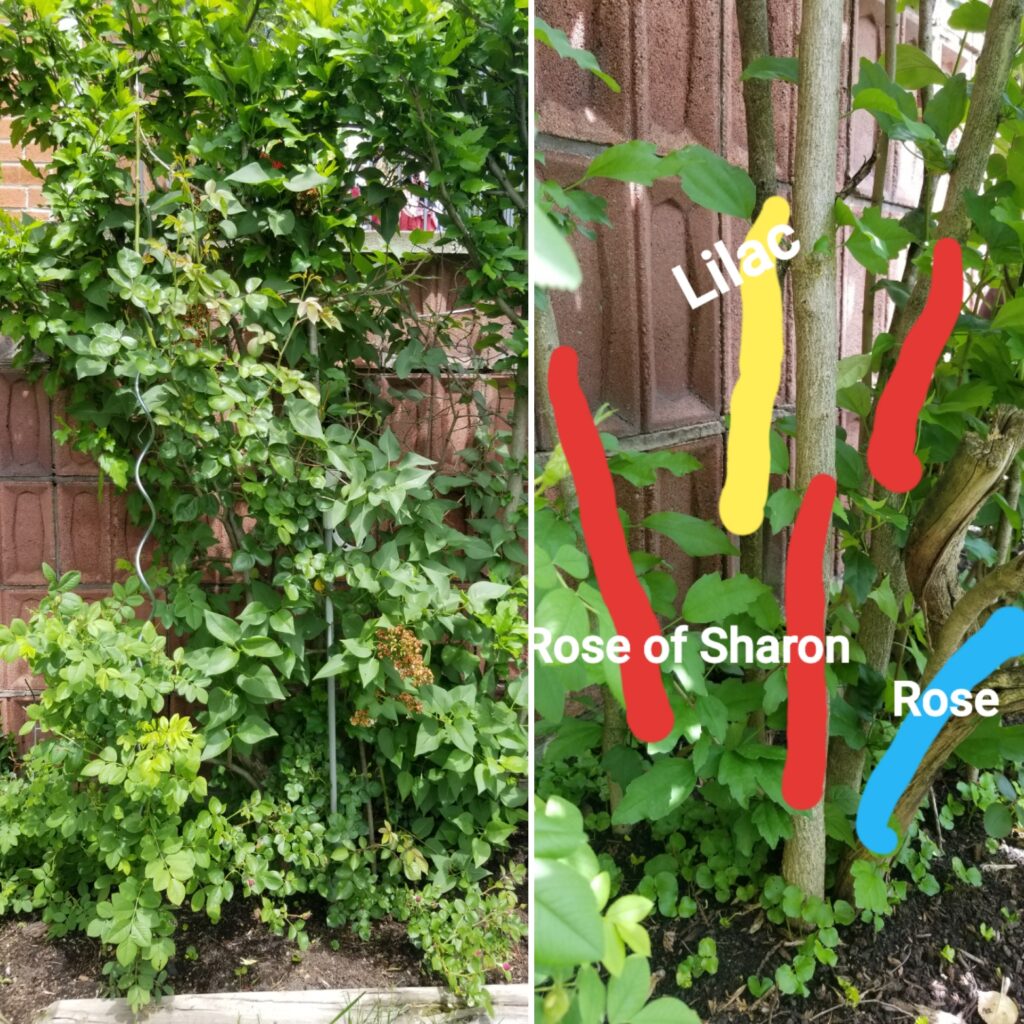
Hi there, a prior owner planted rose of Sharon, lilac and rose bushes all together in a corner, it’s lovely. You’ll see in the picture though that there are now 3 rose of Sharon, one lilac and a rose bush. I’m wondering if I should remove one (or two) of the rose of Sharon, they are quite large and the roses seem to get overpowered. I appreciate your thoughts.
Hello:
Thank you for contacting Toronto Master Gardeners with your question.
Although the picture you sent looks very pretty now, it will be too crowded in future as the plants grow, as you suggested yourself.
If you are going to remove the Rose of Sharon, I would remove all 3 plants. Lilacs grow to be substantial shrubs and this one will eventually need the space. I’m not sure the roses will get enough sun sitting under a lilac, but they might if the lilac is pruned a little. I think it might be a better idea to remove the lilac and the rose instead of the Rose of Sharon. A factor in your decision may simply be which plants are easiest to transplant. You are right in observing that some of the plants will eventually need to be moved; this is most easily done before plants grow too large.
You might be interested in reading the following information from one of our earlier posts on the best time to transplant shrubs:
In general, any time you transplant a tree, shrub or perennial, you run the risk of losing it.In general, the larger and older the plant, the greater the chance that the transplant won’t take. That being said, early spring or early fall is the ideal time to transplant: cool temperatures and frequent rain will give the plant plenty of time to take root in its new location. Whenever a plant/shrub is transplanted some of the plant/shrubs roots will be cut and the remaining roots will need to resettle to be able to draw nutrients and water out of the soil to survive.
When transplanting, try and disturb the roots as little as possible. A cool overcast day with forecasted rain is ideal. Never transplant during the hottest part of the day or during a period of drought. When you are ready to transplant it is best to immediately put the plant in it’s new location- which means preparing the hole in the new location beforehand. The general rule of thumb is to dig a hole twice the width of the root ball.
Once the new location is prepared, dig down and around the shrub trying to keep as much of the root ball in tact. Place the shrub in its new location that has been half filled with water at the same planting depth as it was before. Backfill with the soil that was removed and pack it down with your foot making sure all the air pockets have beem elliminated. Finish with a transplant fertilizer .
Remember, deeper, less frequent watering combined with regular applications of transplant fertilizer will help to minimize transplant shock and ensure a healthy, successful transplant.
The following links give step by step instructions on How to Transplant Trees and Shrubs, Transplanting or Moving trees and Shrubs in the Landscape.

